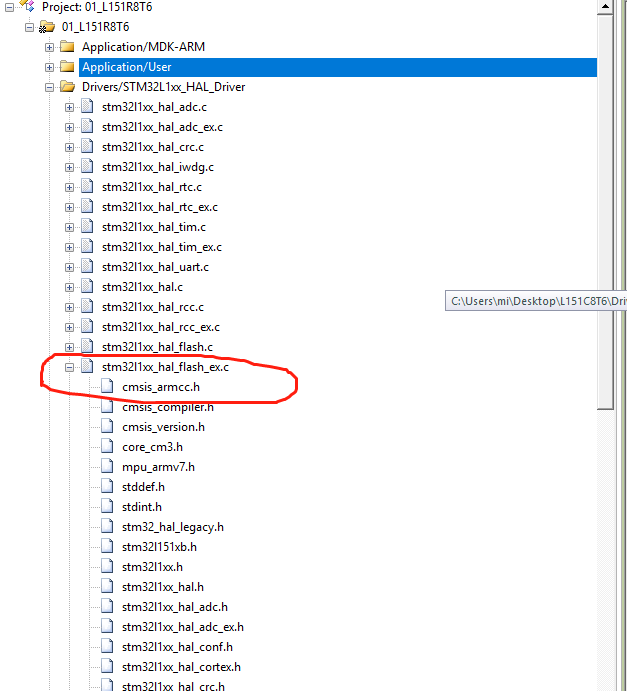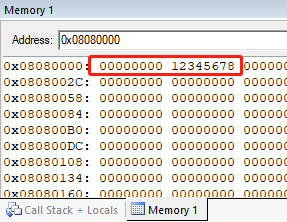Simply generate the code and find the MDK driver file

Official Recommended Steps
##### Data EEPROM Programming Function#####
===============================================================================
[.] Any operation of erasing or programming should follow the following steps:
(#) Call the @ref HAL_FLASHEx_DATAEEPROM_Unlock() function to enable data EEPROM access
Erase control register access with Flash program.
Call the required functions to erase or program data.
(#) Call @ref HAL_FLASHEx_DATAEEPROM_Lock() to disable data EEPROM access
Erase control register access with Flash programs (recommended)
Protect DATA_EEPROM from possible accidental operations.
It only takes three steps to summarize the experiment.
- Unlock
- Write data (erase and write data but write 0x00)
- Locking (it's recommended, but it's useless. It's not a big problem to use it.)
void Program_EEPROM(void)
{
uint32_t data = 0x12345678;
HAL_FLASHEx_DATAEEPROM_Unlock();
HAL_FLASHEx_DATAEEPROM_Program( FLASH_TYPEPROGRAMDATA_WORD, 0x08080000, data);
HAL_FLASHEx_DATAEEPROM_Program( FLASH_TYPEPROGRAMDATA_WORD, 0x08080000 + 4, data);
HAL_FLASHEx_DATAEEPROM_Erase(FLASH_TYPEERASEDATA_WORD, 0x08080000);
HAL_FLASHEx_DATAEEPROM_Lock();
}
- FLASH_TYPEPROGRAMDATA_WORD is a data type and can be Program word (32-bit) at a specified address OR Program word (16-bit) at a specified address OR Program word (8-bit) at a specified address.
- 0x08080000 is the address, which can be found in the official manual.
- Data is written data
Actual operation effect
Erase is also write
/**
* @brief Erase a word in data memory.
* @param Address specifies the address to be erased.
* @param TypeErase Indicate the way to erase at a specified address.
* This parameter can be a value of @ref FLASH_Type_Program
* @note To correctly run this function, the @ref HAL_FLASHEx_DATAEEPROM_Unlock() function
* must be called before.
* Call the @ref HAL_FLASHEx_DATAEEPROM_Lock() to the data EEPROM access
* and Flash program erase control register access(recommended to protect
* the DATA_EEPROM against possible unwanted operation).
* @retval HAL_StatusTypeDef HAL Status
*/
HAL_StatusTypeDef HAL_FLASHEx_DATAEEPROM_Erase(uint32_t TypeErase, uint32_t Address)
{
HAL_StatusTypeDef status = HAL_OK;
/* Check the parameters */
assert_param(IS_TYPEPROGRAMDATA(TypeErase));
assert_param(IS_FLASH_DATA_ADDRESS(Address));
/* Wait for last operation to be completed */
status = FLASH_WaitForLastOperation(FLASH_TIMEOUT_VALUE);
if(status == HAL_OK)
{
/* Clean the error context */
pFlash.ErrorCode = HAL_FLASH_ERROR_NONE;
if(TypeErase == FLASH_TYPEERASEDATA_WORD)
{
/* Write 00000000h to valid address in the data memory */
*(__IO uint32_t *) Address = 0x00000000U;
}
if(TypeErase == FLASH_TYPEERASEDATA_HALFWORD)
{
/* Write 0000h to valid address in the data memory */
*(__IO uint16_t *) Address = (uint16_t)0x0000;
}
if(TypeErase == FLASH_TYPEERASEDATA_BYTE)
{
/* Write 00h to valid address in the data memory */
*(__IO uint8_t *) Address = (uint8_t)0x00;
}
status = FLASH_WaitForLastOperation(FLASH_TIMEOUT_VALUE);
}
/* Return the erase status */
return status;
}
If you don't understand it, you can search for pointers to force type conversion.
I have a couple of questions that I'm confused about.
- Does a new download erase this subregion?
- Can flash use the same function?